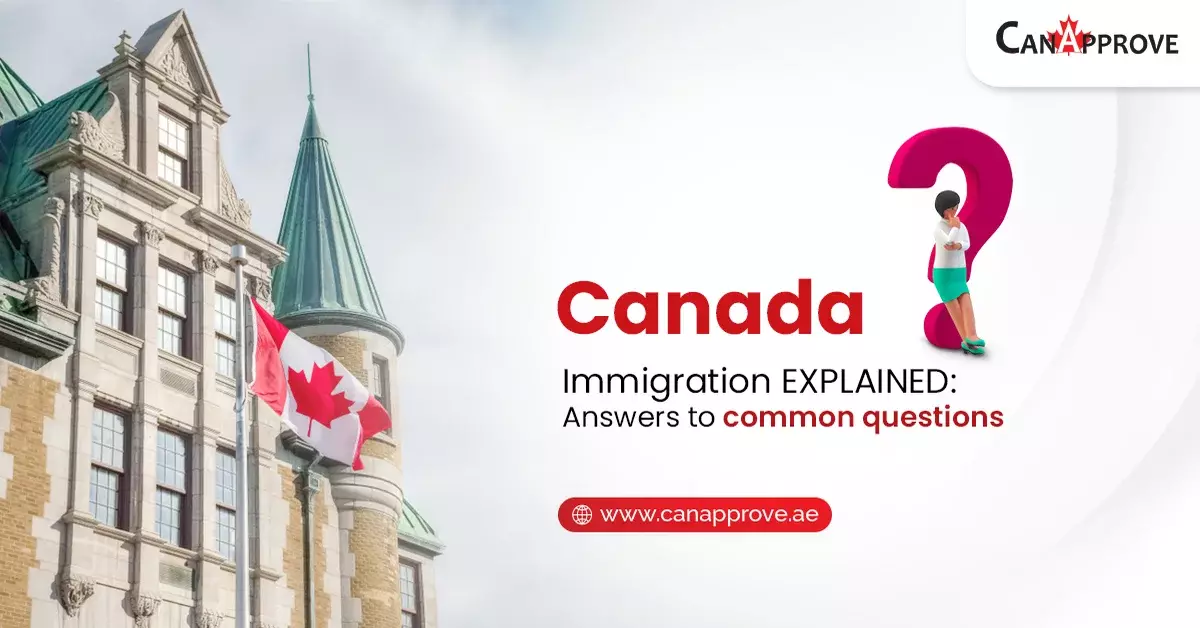Canada has witnessed a steady inflow of foreigners who chose to settle permanently based on their work skills and otherwise. Tracing back to the modern Canadian immigration system that possibly began in 1967, the “immigration points system” has evolved considerably today. This is why we have come up with a Q&A-styled blog about Canada immigration for dummies to comprehend your chances of qualifying.
Understanding Canada Immigration 101
Canada immigration 101 lessons will give you a basic understanding of the scope of immigration in Canada. In Canada, immigration is the act granting permanent residency status, including to refugees. Furthermore, all Canada permanent residency holders are eligible to apply for Canadian citizenship after meeting certain requirements. Let’s begin the Canada immigration 101 lesson by answering the top 4 frequently asked questions about the immigration journey to Canada.
Q: Immigrants vs. Refugees: How are People Getting into Canada?
The modern-day approach to immigration policy in Canada extends to three major classes of immigration: economic, family, and refugees. While the country prefers to target newcomers with skilled work experience, Canada is still open to accepting refugees to strengthen its demography. Individuals and families refugees are assessed by the United Nations High Commissioner for Refugees (UNHCR) prior to arriving in Canada.
However, Canada’s largest and most preferred immigration target class is economic. It comprises a diverse set of subclasses including:
- Skilled worker: Candidates with enough skilled work experience but not necessarily in Canada.
- Canadian experience class: Candidates with enough study/work experience in Canada.
- Provincial/territorial nominee: Candidates whose work experience meets local in-demand occupations and is invited to apply for Canada immigration under Provincial Nominee Programs (PNP)
- Skilled trades: Candidates with work experience in semi-skilled occupations majorly in three sectors: Construction, Transportation & Services.
- Entrepreneur/Self-employed/Investors/Start-up business: Candidates with a certain personal net worth and willing to set up a business in Canada.
- Live-in caregiver: Live-in caregivers are individuals who are qualified to provide care for children, elderly persons, or persons with disabilities in private homes without supervision.
The introduction of the Canada Express Entry system in 2015 has streamlined the immigration process for skilled worker applications. The growth of the Provincial Nominee Programs has been phenomenal in becoming an alternate pathway for Canada PR in recent years. The province of Québec manages its own economic class immigration system independent of the federal government. Learn more about it here.
Principal applicants under these programs are subject to the points system. Potential applicants are assessed and evaluated based on age, education, language proficiency in English or French, work experience, and more.
Q: What is the Present State of Canada Immigration?
The revised Immigration Levels Plan for 2022-2024 will welcome about 1.7 million newcomers over the next three years including economic, family, and refugee class immigrants.
However, Immigration, Refugees and Citizenship Canada (IRCC) is said to let Canada Provincial Nominee Programs (PNP) take the center stage in inviting more than 83,500 immigrants to apply for Canada immigration in 2022. In fact, Canada is more dependent on PNP to meet its annual immigration targets ever since the pandemic.
Canada has also decided to cut Express Entry admissions in half for 2022 mainly due to increasing backlogs in the FSWP & CEC applications in the pool. IRCC will return to normal Express Entry admissions levels by 2024 when it targets the arrival of 111,5000 Express Entry immigrants then.
Quebec has returned to the target of welcoming over 50,000 immigrants in 2022 after four years of cutting immigration by 20 percent. About 65 percent will arrive through its economic-class immigration programs.
The study in Canada campaign is also picking up pace in recent times. In fact, the latest statistics will entice more international students to plan their higher studies in Canada. Over the period 2008 to 2018, the annual number of new Post-Graduation Work Permit (PGWP) holders increased six-fold, from 10,300 to 64,700. Close to three-quarters of all PGWP holders transitioned to permanent residence within five years of obtaining their PGWP.
Follow our regular news updates to upgrade your ‘Canada immigration for dummies’ guide to ‘plan your Canada immigration with expert advice’ guide.
Q: How Useful is Applying for Canada Immigration Through Certified Consultants?
Applying for Canada immigration on your own is certainly preferred yet can extend for months. Engaging a certified immigration consultant manages your time better.
Certified Immigration Consultant like CanApprove can help you & is highly recommended if you have been:
- rejected previously or;
- have a potential medical inadmissibility concern or;
- you’re applying through a complex immigration program or;
- you may have a unique case in hand or;
- you wish to ignore tedious documentation.
With a monthly average of 100+ immigration and overseas education successes, CanApprove is certainly among the best immigration consultants and visa consultants in Dubai and the nearby regions.
Q: Can Canada’s Healthcare System Cope with Immigration?
It is generally known that new immigrants are healthier than Canadian-borns. In fact, Canada accepts visa applications only after a prescribed medical checkup. Also, considering the fact that the country prefers more young-age immigrants to settle, they will not pose a burden on the country’s healthcare system.
The new $10-per-day child care for immigrant families could reduce daycare fees by 50 percent on average everywhere outside of Quebec. The federal government has already committed to investing $30 billion over the next five years and then a minimum of $9.2 billion annually after that. This announcement is to support the affordable daycare program across Canada which was announced in the 2021 budget speech tables by the federal government led by Justin Trudeau.
As per various federal and provincial government data, Immigrants get the same amount of social assistance compared to native Canadians. Such assistance includes resettlement, community integration programs, healthcare benefits, education benefits to dependent children, etc. However, immigrants under family sponsorship programs are not a part of any social assistance program.
That’s all for this edition of Canada Immigration for dummies. Book your free appointment with CanApprove to determine your eligibility based on your particular case.













Mr. Dharmeshkumar Parekh says:
I’m interested for Canada Visa Process